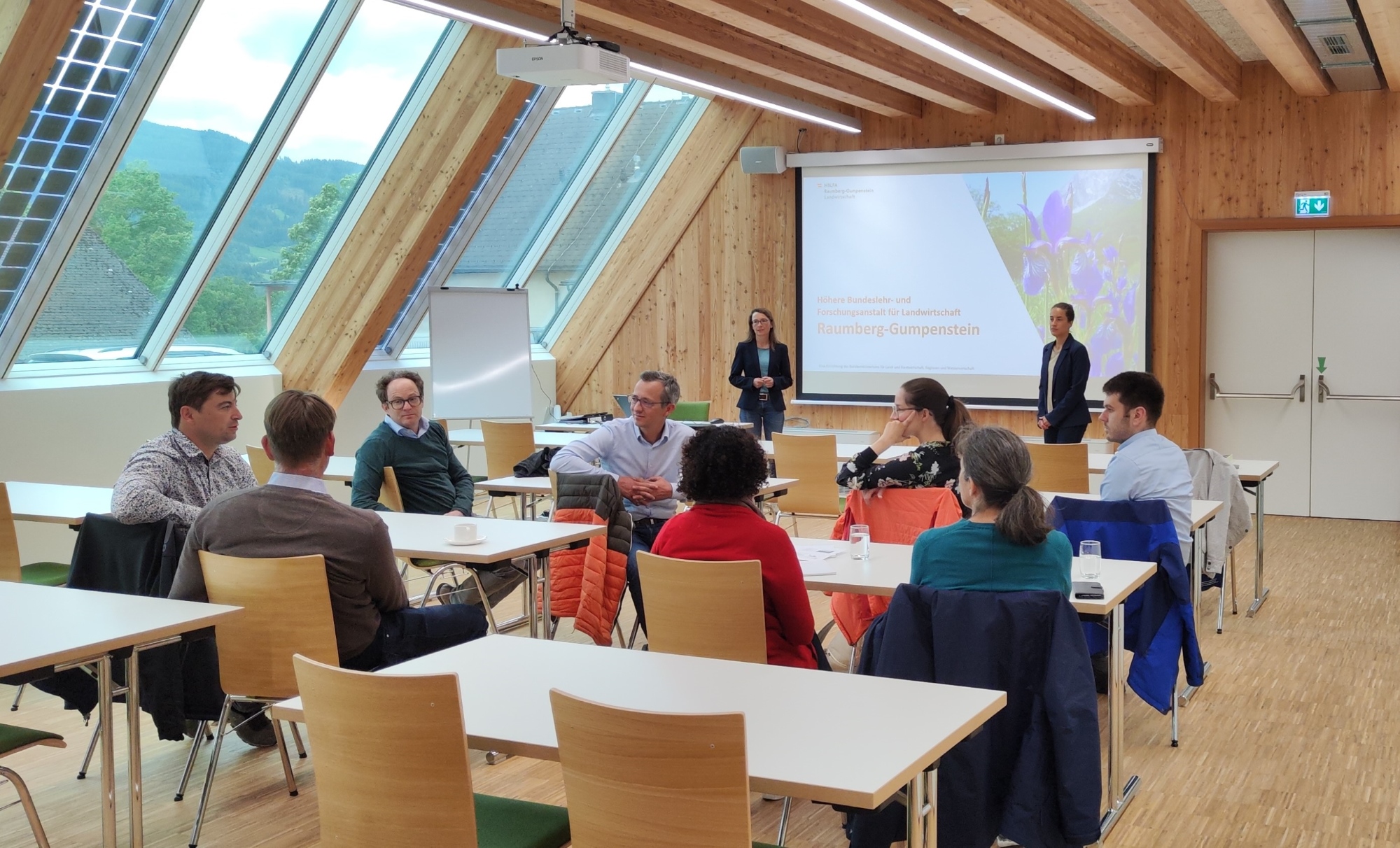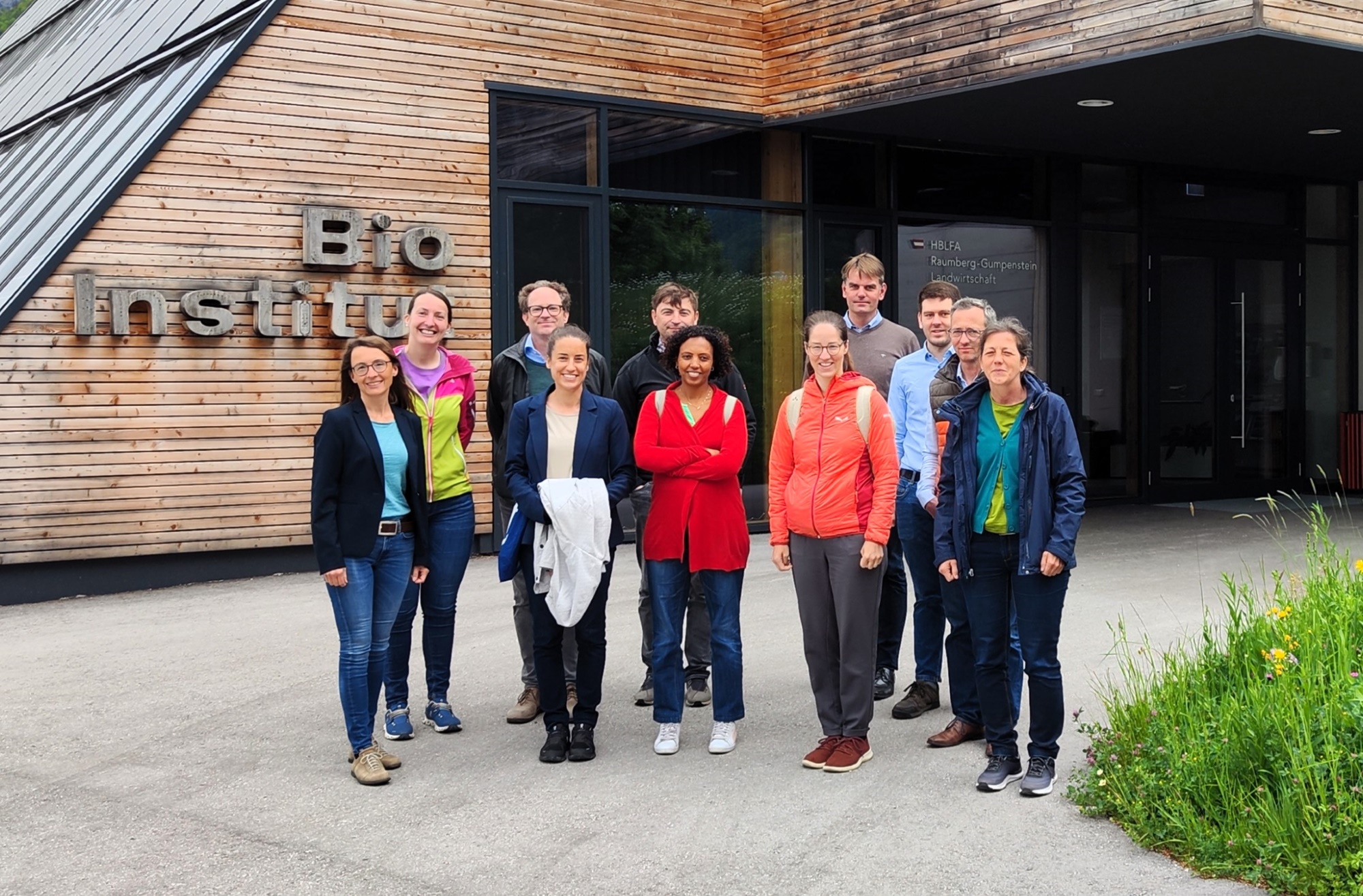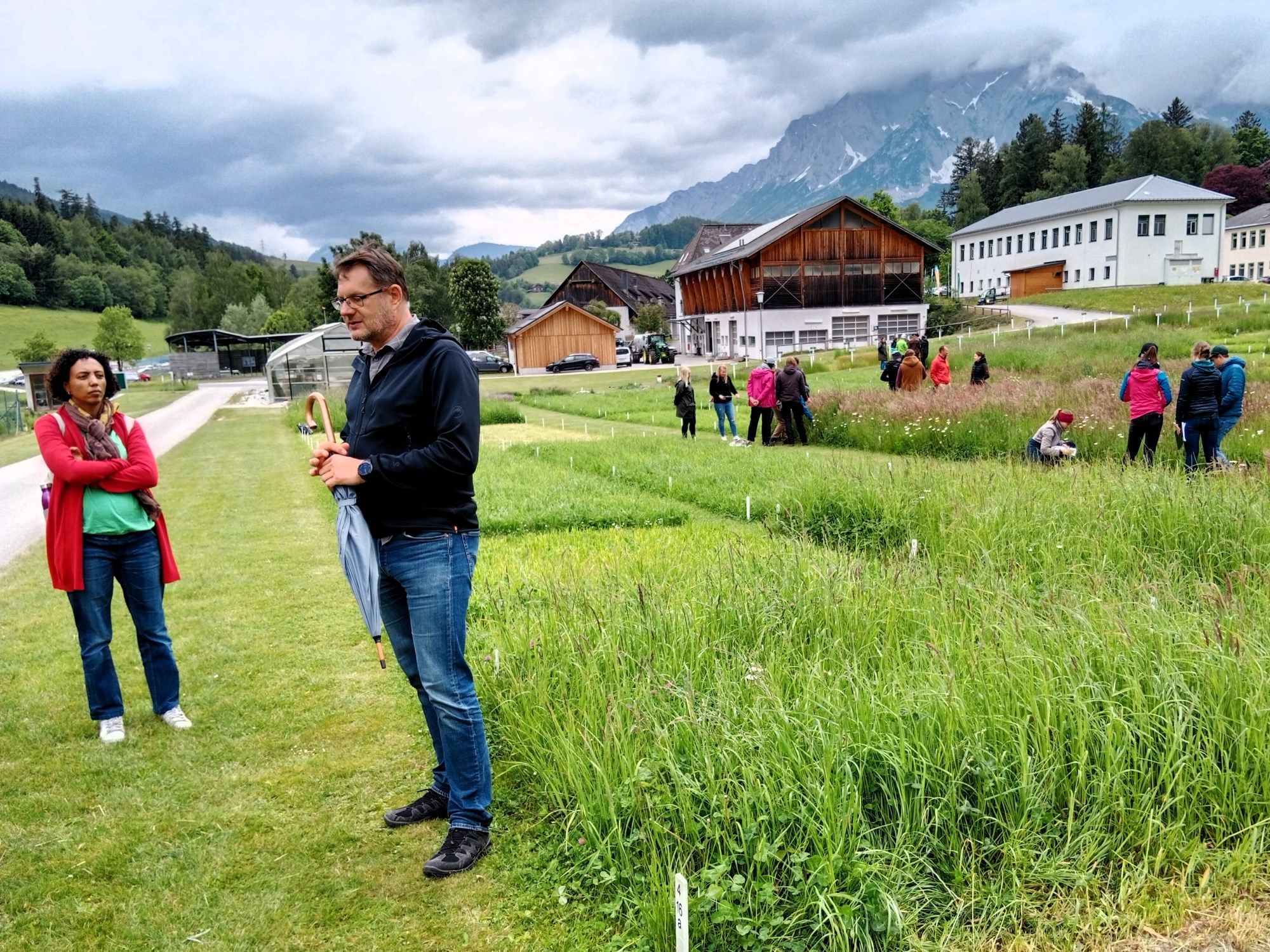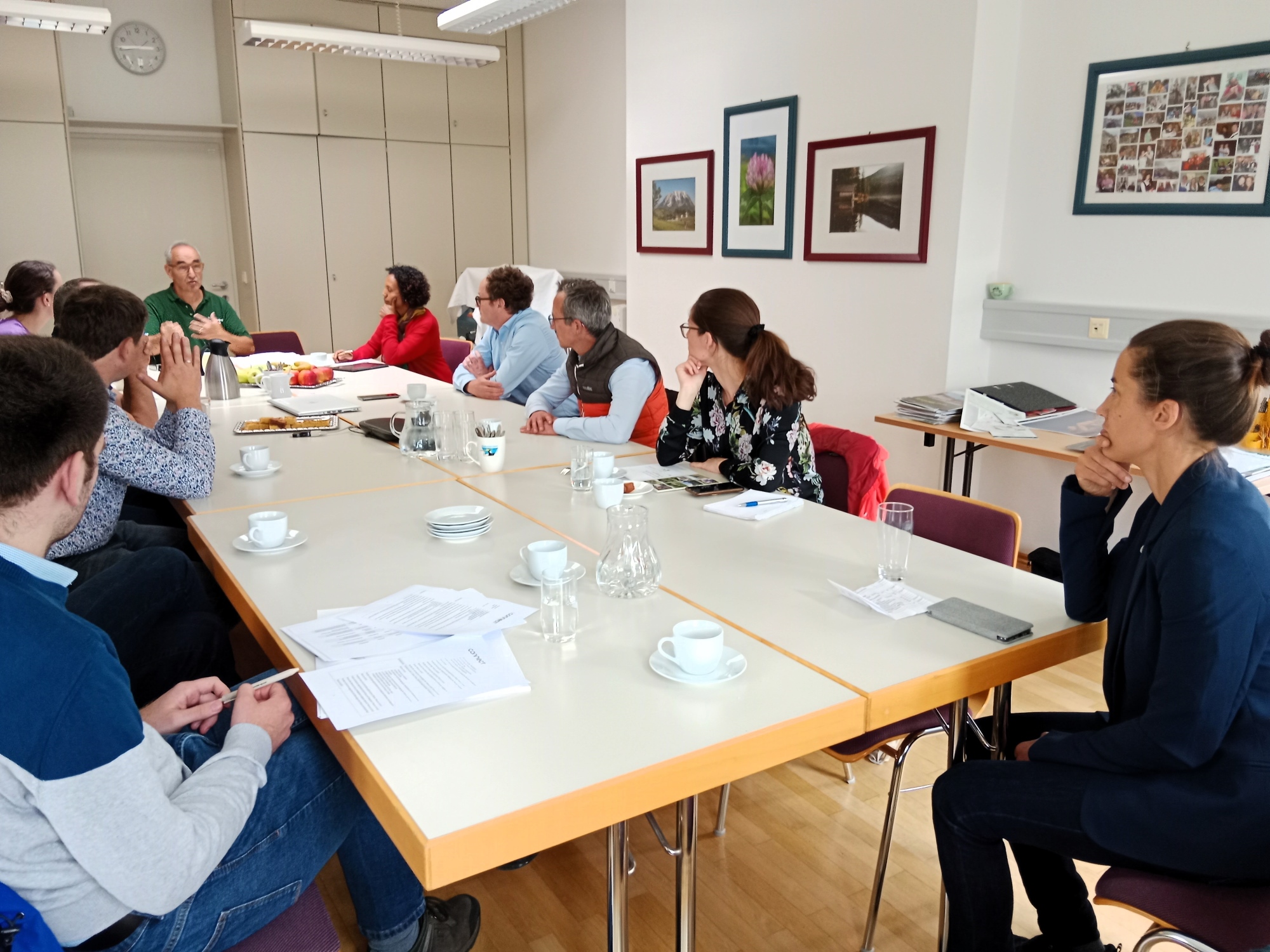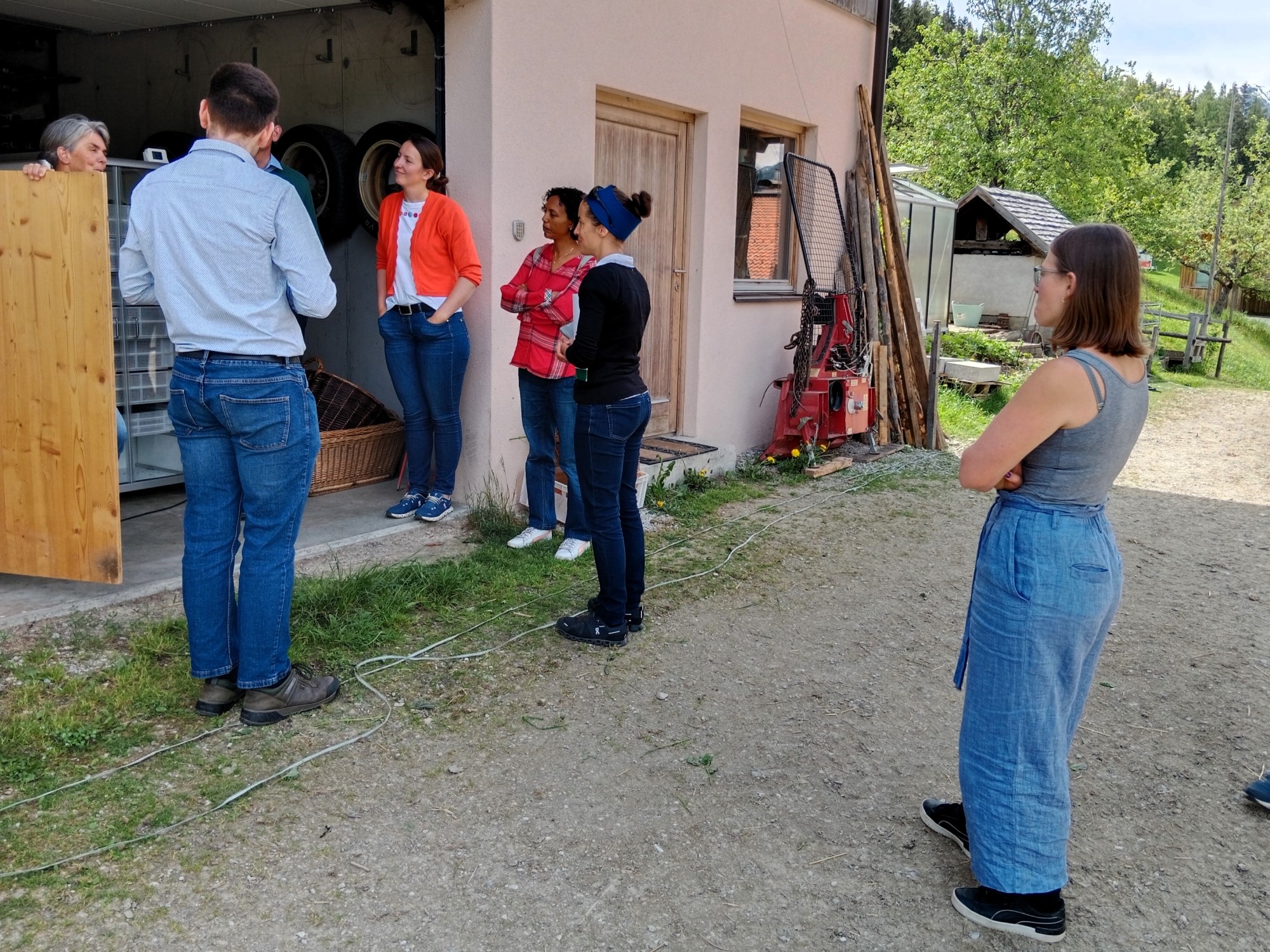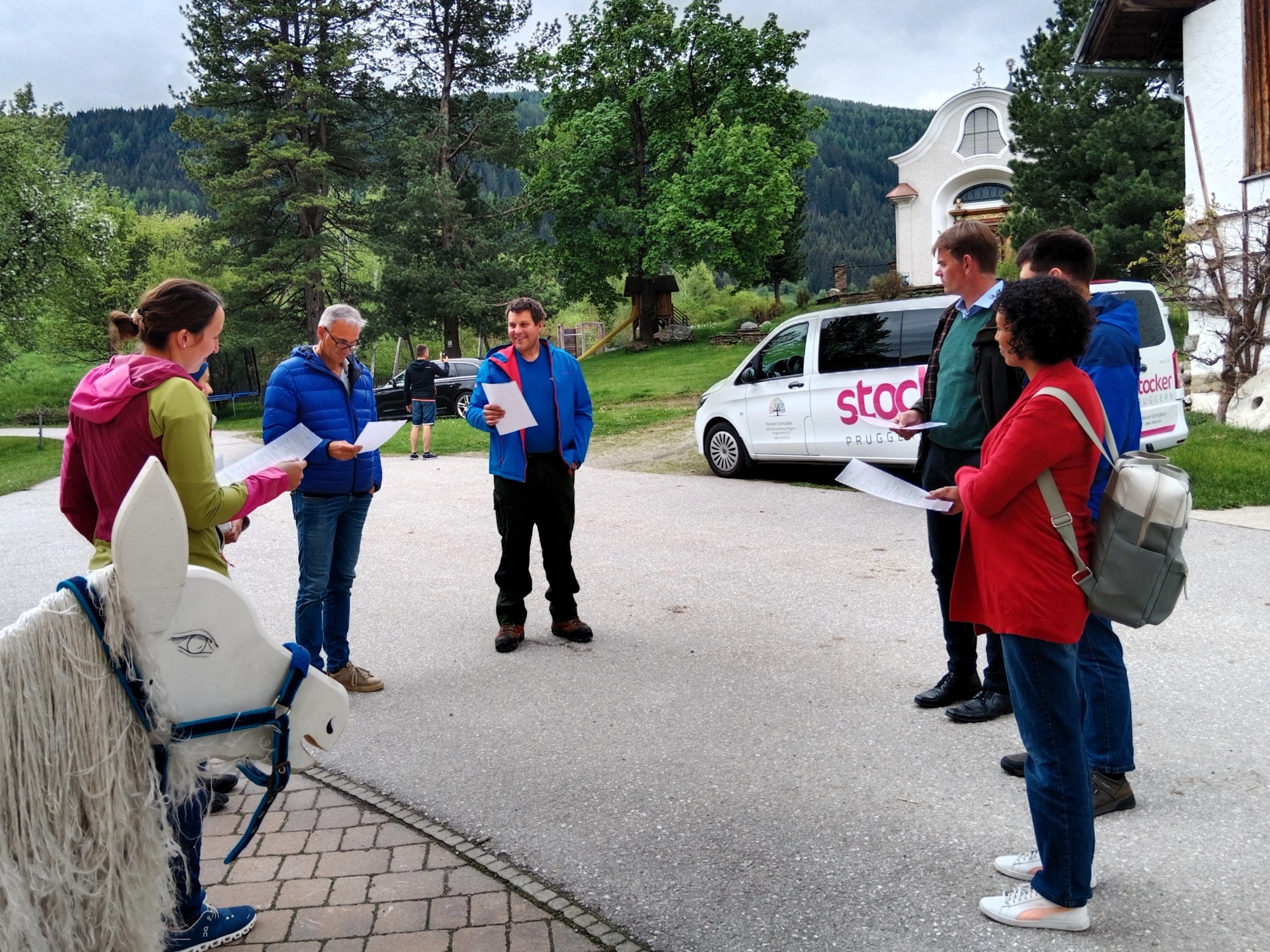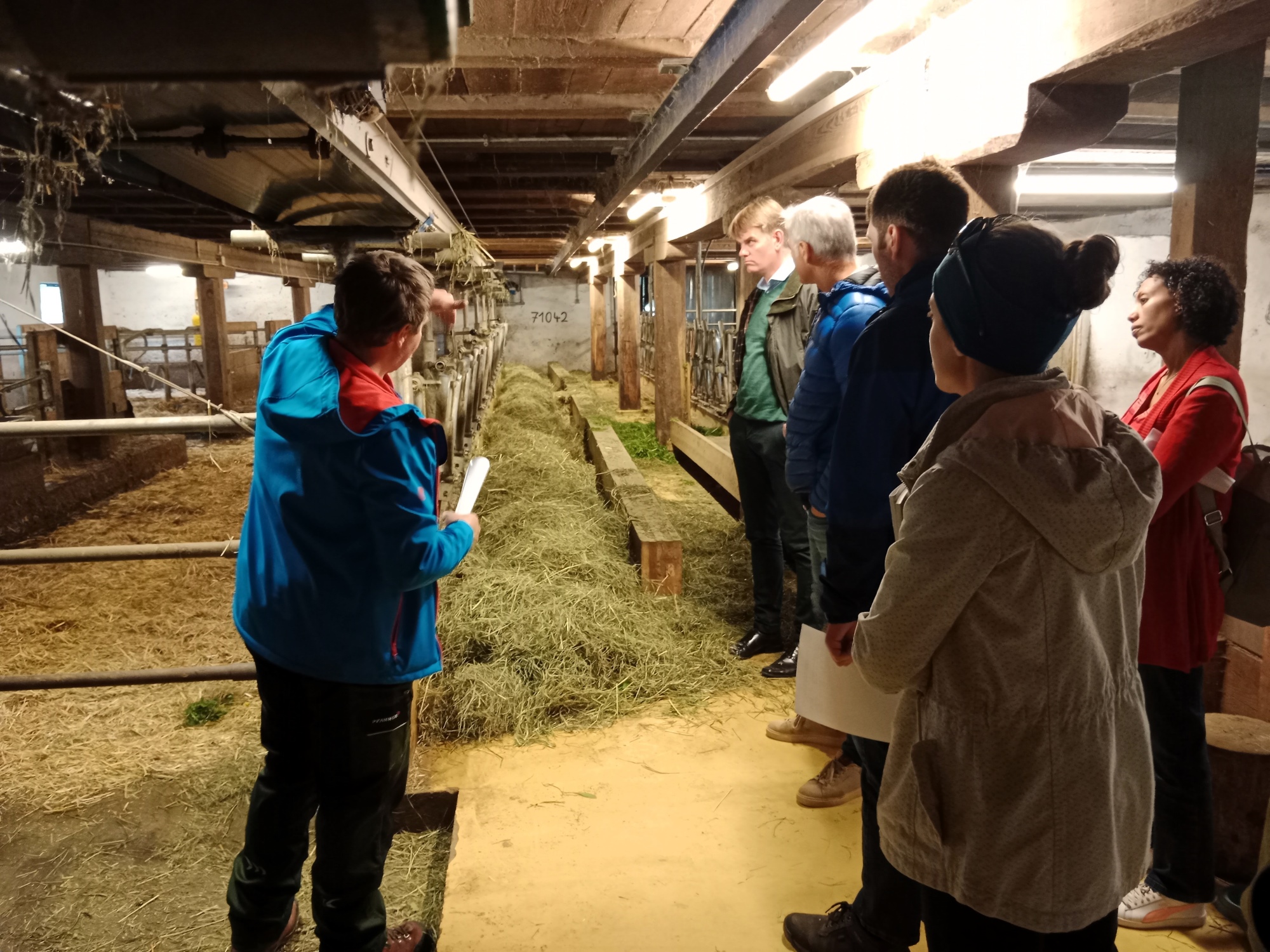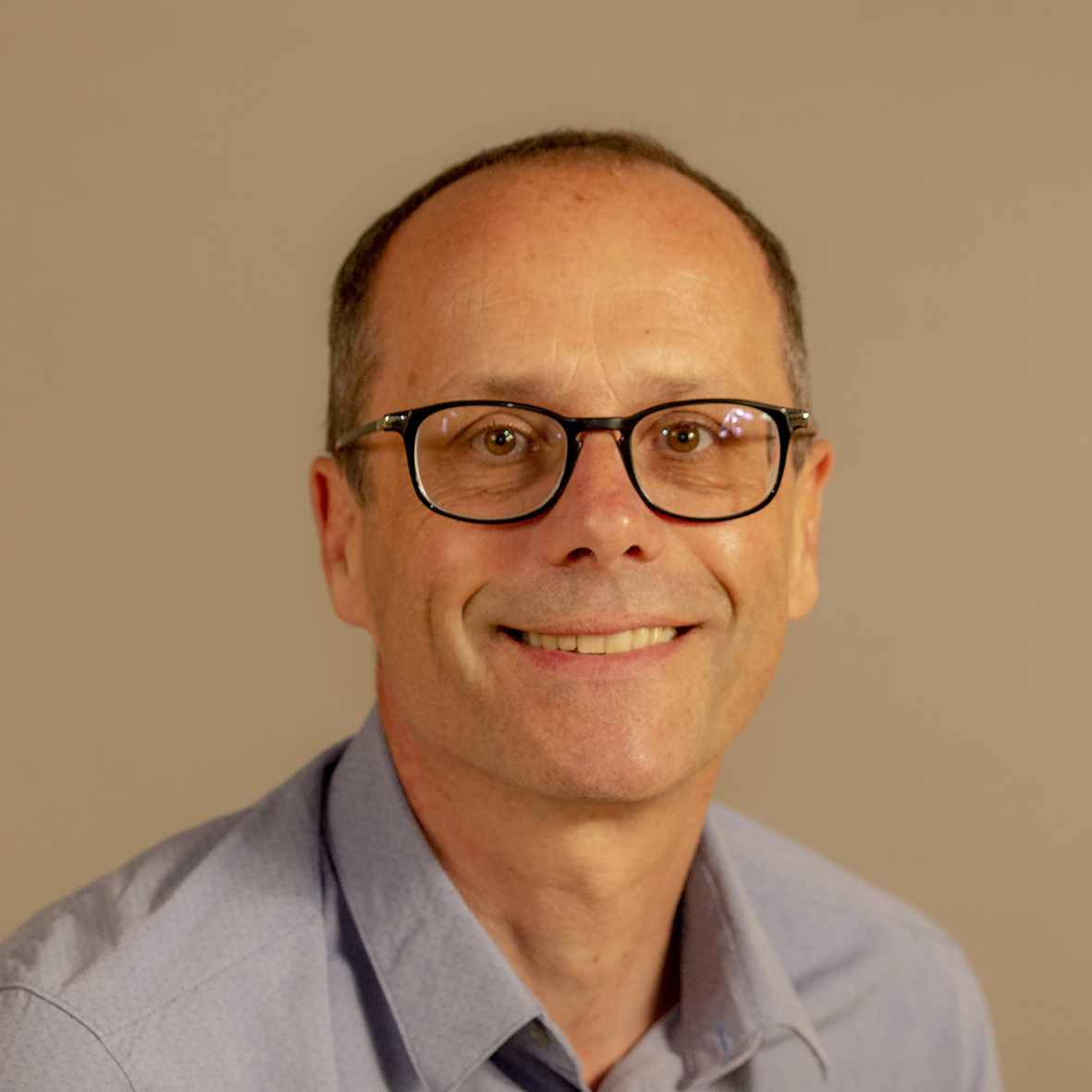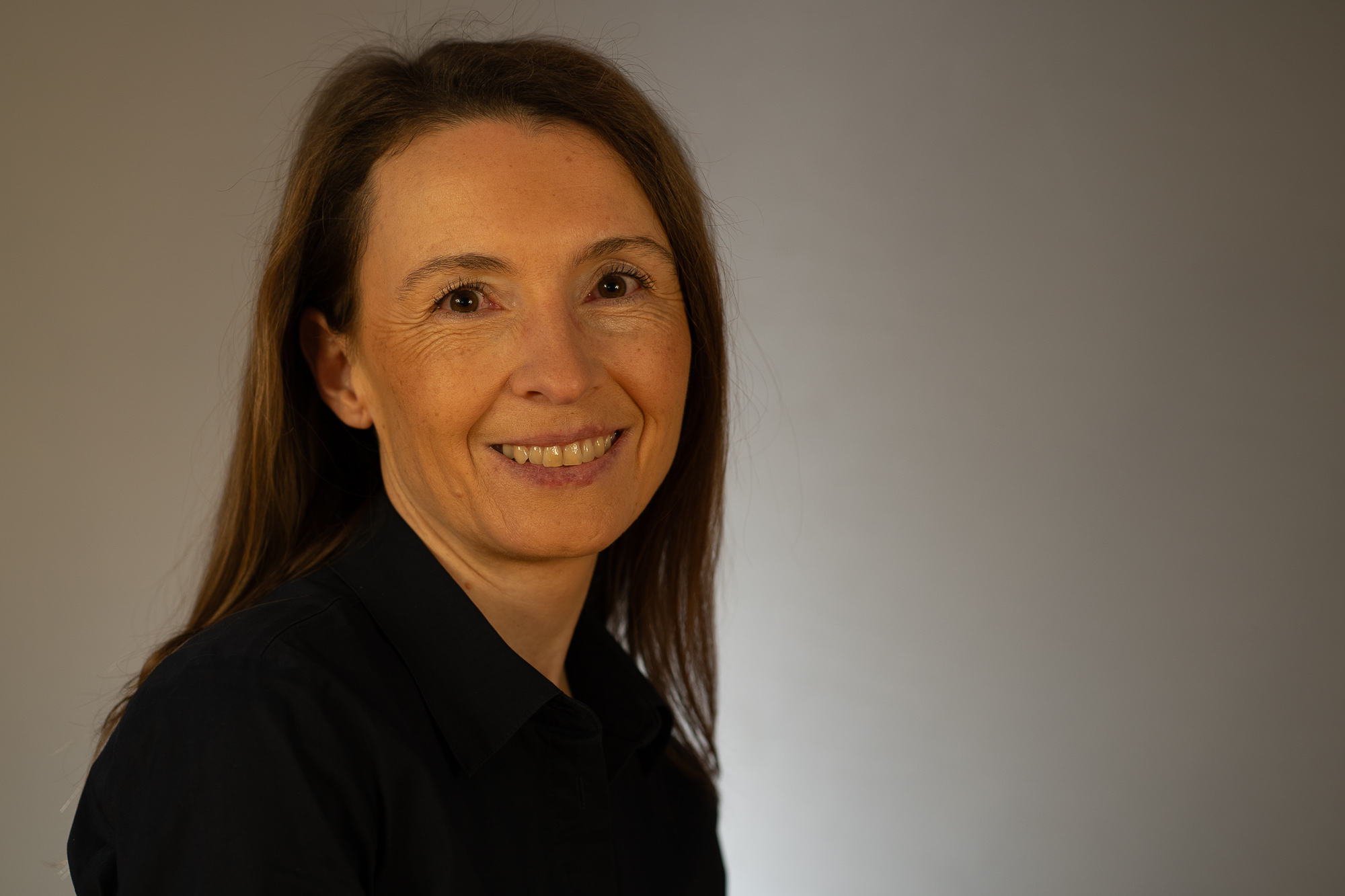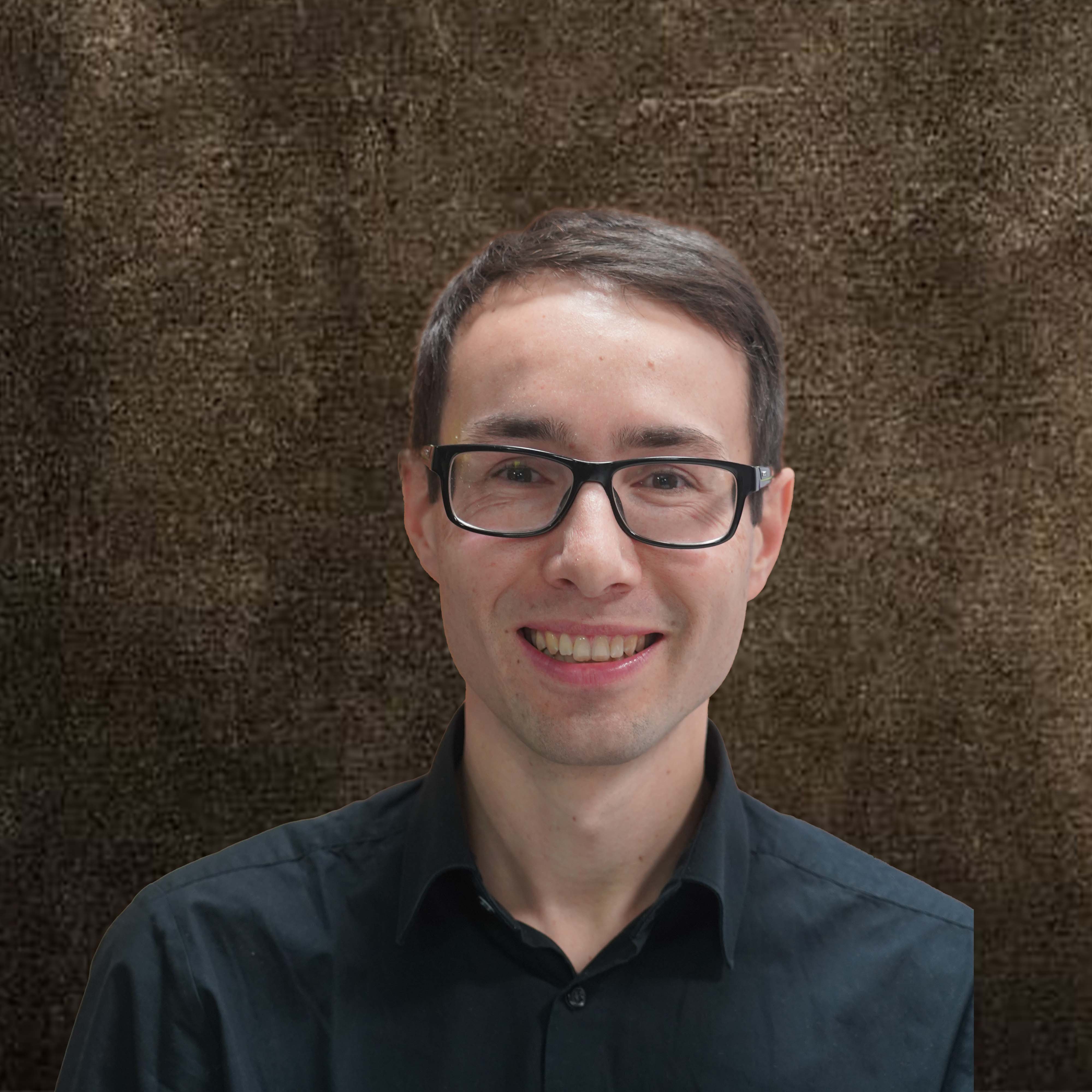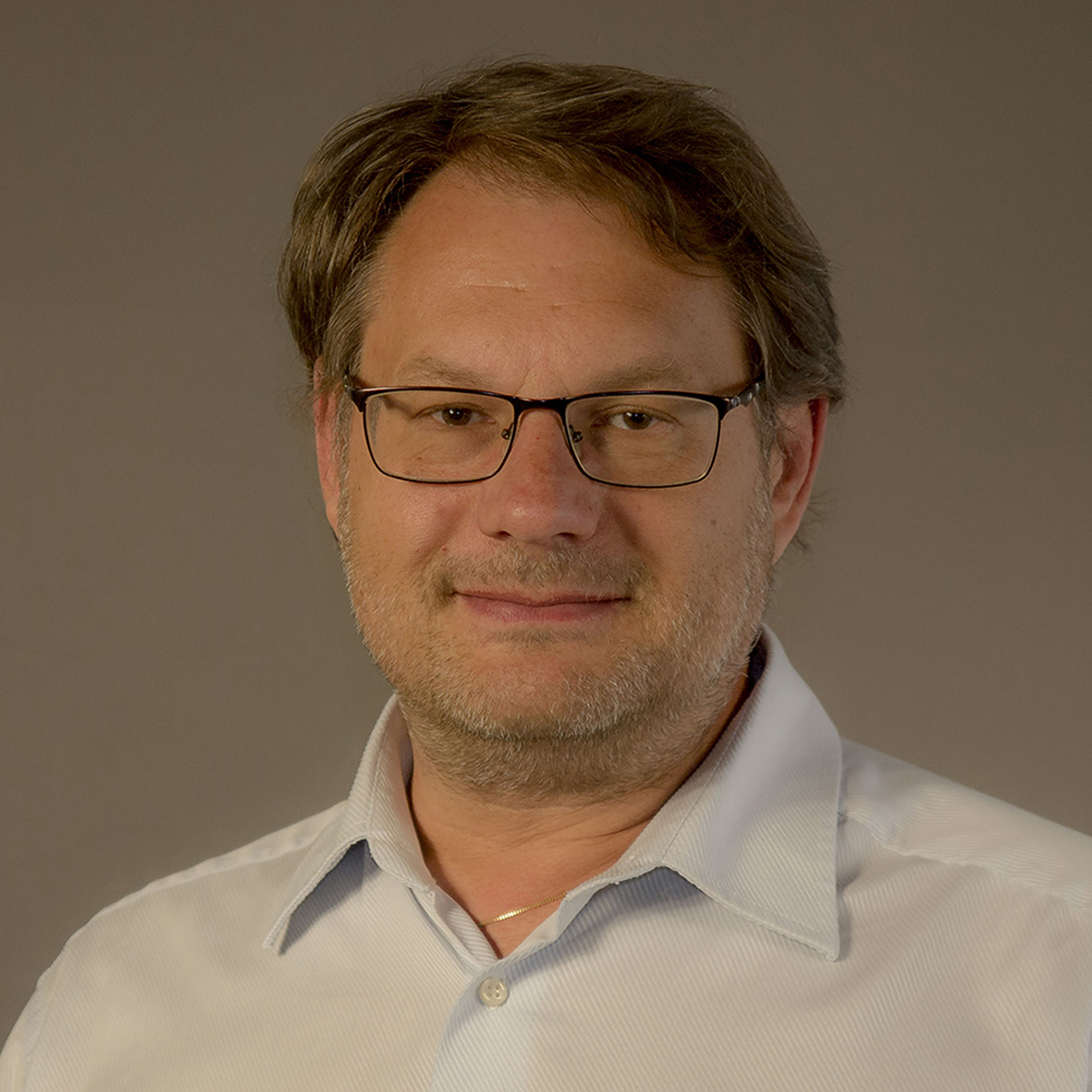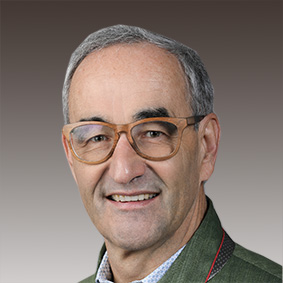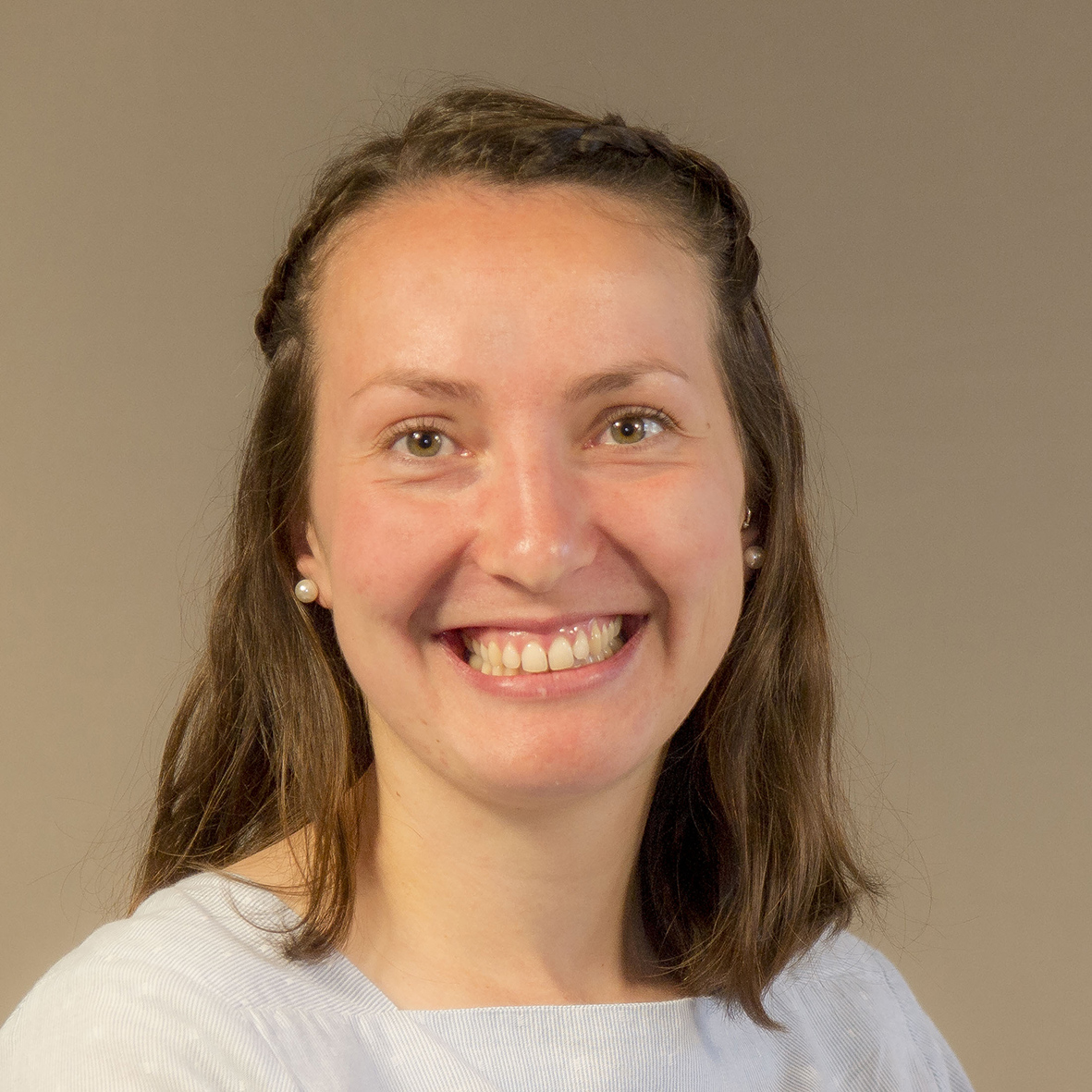Anna Herzog (LK Austria), who together with Andreas Steinwidder was project manager of the completed “EIP mountain dairy cattle” project, organized the stay for the guests with Eveline Neubauer (HAUP). After insightful excursions to the two flagship farms of the mountain dairy cattle project , the Kaml family in Wagrain and the Prodinger family in Mariapfarr, the HBLFA Raumberg-Gumpenstein was visited. In addition to input on the topics of “FarmLifeWelfare” and “Biodiversity ” at the Moarhof from Elfriede Ofner-Schröck and Daniel Lehner, Andreas Schaumberger gave an insightful insight into climate impact research with the ClimGrass system and other grassland experiments .
In the afternoon, questions about the “Mountain Dairy Cattle” project were discussed. In addition to substantive activities in the project, experiences were exchanged with the German guests during the project period and the operational process was discussed. In addition to Andreas Steinwidder , Alfred Pöllinger-Zierler and Edina Scherzer, some external colleagues who worked together on the mountain dairy cattle project also met at Gumpenstein Castle.
Very positive feedback within the project group but also from colleagues from the i2connect project shaped the discussions and allows us to look back with joy on the completed “Mountain Milk Cattle” project. All project results, conversion solutions for dairy cattle sheds in mountain areas and information on alternative business development strategies are freely available under the link www.bergmilchvieh.at
